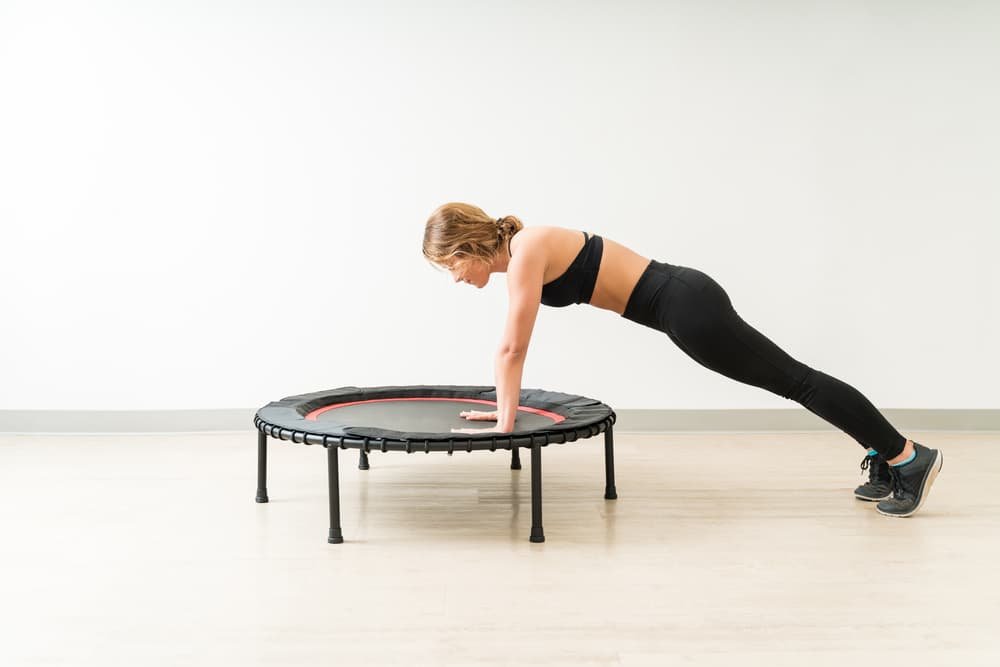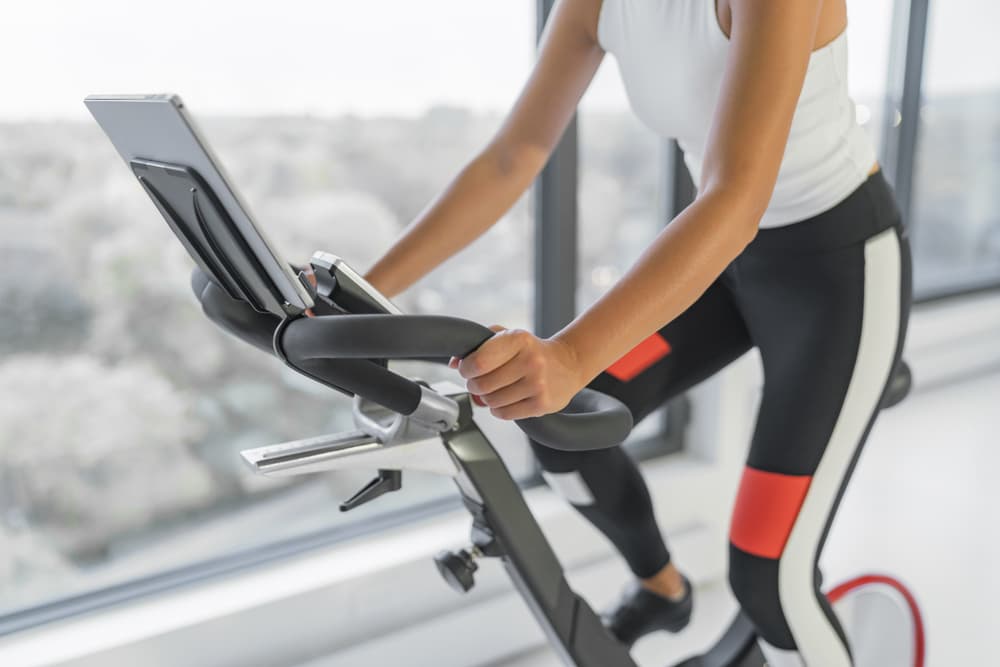Every hour of every day, we move through countless different motions that require the muscles to contract and relax, all in very different ways.
For those of us looking to improve our athletic performance and physique, it is imperative that we understand the different types of muscle contractions available to us, and how to use them.
When it comes to the three I’s (isometric, isotonic, and isokinetic), there is often some confusion around these terms and what they achieve individually.
In this article, we aim to break that confusion and explain the differences.
The Three I’s
| Isometric | Isotonic | Isokinetic |
| Static position. No shortening or lengthening of muscle tissues. Joint angle stays fixed (e.g. plank). | Dynamic movement. Muscles shorten and lengthen. Using a fixed weight throughout the whole movement (e.g. dumbbell bicep curl). | Dynamic movement. Muscles shorten and lengthen. Variable tension throughout the movement (e.g. stationary bike). |
Before deciding which type of exercise is right for you, it is first helpful to understand the benefits and disadvantages of each and how they relate to your desired outcome.

What is Isometric Contraction?
Isometric muscle contractions occur when the muscles engaged stay at the same length, tension, and speed. They may also be referred to as static exercises. Throughout an isometric exercise, the joint angle remains static instead of changing during the movement.
Essentially, an isometric contraction is when a muscle is engaged without the joint moving.
Benefits of Isometric Exercises
As a rehabilitation tool, this kind of exercise has numerous benefits. Not only are they a low load exercise, they also help to maintain strength, stability and endurance around a joint.
We can slowly increase and self-dose the level of resistance based on what we can tolerate, as opposed to biting off more than we can chew with variable free-weight loading.
It has been well documented and re-affirmed in recent studies that early isometric loading has both a pain-relieving effect in acute tendon irritation, including but not limited to the knee, hip and shoulder.
It also serves as a protective response for soft tissue injuries such as muscle strains.
A recent study incorporating early isometric loading as part of a comprehensive hamstring rehab program for elite track and field athletes demonstrated increased tendon adaptation, faster return to full training, and lower injury recurrence rates (Pollock et al., 2022).
It has also been theorized more recently that Isometric loading can have positive effects on decreasing blood pressure, making it a very useful tool for those not able to engage in higher-intensity exercise, although it is worth noting that this still needs more research to verify the claims (Edwards et al., 2022).
Examples of Isometric Exercises You Can Do
Isometric exercises are easy and accessible, making them possible to do anywhere you go with little or no equipment. Some types of isometric exercise you could try are:
- push-up holds
- squat holds
- yoga ball/step bridge holds
- side plank holds

What is Isotonic Contraction?
Isotonic exercise is the most common kind of exercise you see people doing in your local gym.
Isotonic contractions exert a constant strain or tension on the muscles whilst the joint moves through a full range of motion.
As the joint moves through its full range of motion, the muscles shorten to contract against the constant resistance. As you relax, the muscles lengthen again.
We can split isotonic exercise into two components: concentric and eccentric.
During the concentric portion of the exercise, your muscles are generating force as they shorten, allowing you to overcome the resistance.
As you reach the peak of your contraction and begin to lengthen the muscle whilst still generating some force, your muscles would now be working through an eccentric phase.
An example of this would be the controlled lowering phase of a bicep curl.

Benefits of Isotonic Exercises
1. Strengthens through a full range of motion
Working your muscle fibres through their full range of motion builds strength in all of the muscles and is much more useful for functional movements compared to isometric exercises alone.
This is often a vital component of rehabilitation after bed rest in order to regain our full functionality as we now know that prolonged best rest can lead to an atrophy rate of up to 2% per day! (Jiricka, 2008).
2. Develops speed and muscle power
Isotonic exercise has long been demonstrated as an effective means of improving lean muscle mass, which in turn translates to an increase in power generation available. In athletic populations, this has been shown to increase hop distance, 30m sprint performance, and vertical jump height (Helland et al., 2017; Lee et al., 2018).
3. Helps to increase and maintain bone density
For those who might be at risk, or living with bone density deficiencies such as osteoporosis, research has reliably shown us that regular weight lifting can improve bone mass and density.
4. Plays a role in blood sugar regulation
Resistance exercise is a valuable and non-medicinal tool in our armoury for preventing and managing diabetes. It acts as a vital cue for the body to absorb and use glucose (sugar) in order to power the muscles and produce the desired movement. Sugar now moves out of the bloodstream where it would otherwise stay and end up being converted to fat.
5. Develops cardiovascular fitness
Isotonic exercise can have positive impacts on cardiovascular fitness by improving oxygen uptake in red blood cells, reducing heart rate, increasing cardiac output, and greater muscular endurance, helping to reduce the risk of heart disease (Daniels, 2019).

Examples of Isotonic Exercises You Can Do
Before embarking on a new fitness routine you should always check with your local healthcare professional to make sure that it is appropriate for you. That said, try giving these isotonic exercises a go:
- double leg squat
- push ups
- pull ups
- deadlifts
- barbell bicep curls
What is Isokinetic Contraction?
The key variable for isokinetic exercise is speed. The exercise category is dynamic, can have a variable resistance, and is often machine-controlled.
The external control helps to keep the speed steady and reduces the risk of further injury. This makes isokinetic exercise particularly useful in physical and occupational therapy, as well as post-stroke.
Benefits of Isokinetic Exercises
1. Relatively safe compared to other types of exercise
As most isokinetic exercises require machine resistance, this helps to keep the exercise self-contained and prevents the user from pushing themselves beyond a resistance that they can control. Subsequently, this helps to keep injury risk low.
2. Useful for neurological rehab after a stroke
Recent studies have proved isokinetic eccentric training of the hips and knees to significantly improve outcome measures vital to an efficient gait cycle (walking pattern).
From these results, we can infer that by combining isokinetic exercise with normal exercise treatment we can greatly improve the functional recovery of stroke patients (Lee and Kang, 2013).
3. Improves muscle strength, increases lean body mass, and reduces body fat
Isokinetic strength exercises help to increase the effects of aerobic exercise amongst obese populations by improving strength, lean body mass, whilst also reducing body fat.

Examples of Isokinetic Exercises You Can Do
Some isokinetic exercises can be quite physically strenuous so, if you are unsure, always check with a doctor before starting.
Isokinetic machine resisted exercises often require specialist equipment and training to operate. However, here are some simple and accessible options you could try:

Tips Before Attempting These Exercises for the First Time
As with all things, not every kind of exercise is suitable for every person. Stick to the following tips for a safe and effective workout:
- See a health or fitness professional if you are unsure of which type of exercise is appropriate for your goals.
- Seek advice from a specialist before starting if you have any neurological or cardiopulmonary conditions.
- Start small and build up. This might mean doing only half of the resistance, repetitions, or volume that you think you may be capable of. Your body needs time to adapt to a new type of exercise in order to avoid unnecessary injuries.
Bottom Line
Quite often, we need to utilise all three types of exercise in order to achieve the best outcomes. Sometimes this can be a complicated process and certainly if you are looking to rehabilitate from an injury or ailment then seeking advice from a specialist would be advised.
An individualised program that addresses strength, flexibility, and functional deficits whilst also benefiting physical and mental well-being should always be the goal.
References
Pollock, N., Kelly, S., Lee, J., Stone, B., Giakoumis, M., Polglass, G., Brown, J. and MacDonald, B., 2022. A 4-year study of hamstring injury outcomes in elite track and field using the British Athletics rehabilitation approach. British Journal of Sports Medicine, 56(5), pp. 257-263.
Edwards, J., De Caux, A., Donaldson, J., Wiles, J. and O’Driscoll, J., 2022. Isometric exercise versus high-intensity interval training for the management of blood pressure: a systematic review and meta-analysis. British Journal of Sports Medicine, 56(9), pp. 506-514.
Jiricka, M.K., .2008. Activity tolerance and fatigue pathophysiology: concepts of altered health states. In: Porth, C.M. (ed) Essentials of Pathophysiology: Concepts of Altered Health States. Philadelphia, PA: Lippincott Williams & Wilkins.
Helland, C., Hole, E., Iversen, E., Olsson, M., Seynnes, O., Solberg, P. and Paulsen, G., 2017. Training strategies to improve muscle power. Medicine & Science in Sports & Exercise, 49(4), pp. 736-745.
Lee, S., Lira, C., Nouailhetas, V., Vancini, R. and Andrade, M., 2018. Do isometric, isotonic and/or isokinetic strength trainings produce different strength outcomes? Journal of Bodywork and Movement Therapies, 22(2), pp. 430-437.
Daniels, K., 2019. Cardiac stress testing review for the primary care provider. The Nurse Practitioner, 44(6), pp. 48-55.
Lee, S. and Kang, K., 2013. The effects of isokinetic eccentric resistance exercise for the hip joint on functional gait of stroke patients. Journal of Physical Therapy Science, 25(9), pp. 1177-1179.
- Isometric vs Isotonic vs Isokinetic Exercises: Explained - 12 August 2022
- Is Pilates Better Than Weight Training? - 29 March 2022
- Can You Use A Massage Gun For Carpal Tunnel Syndrome? - 16 March 2022
